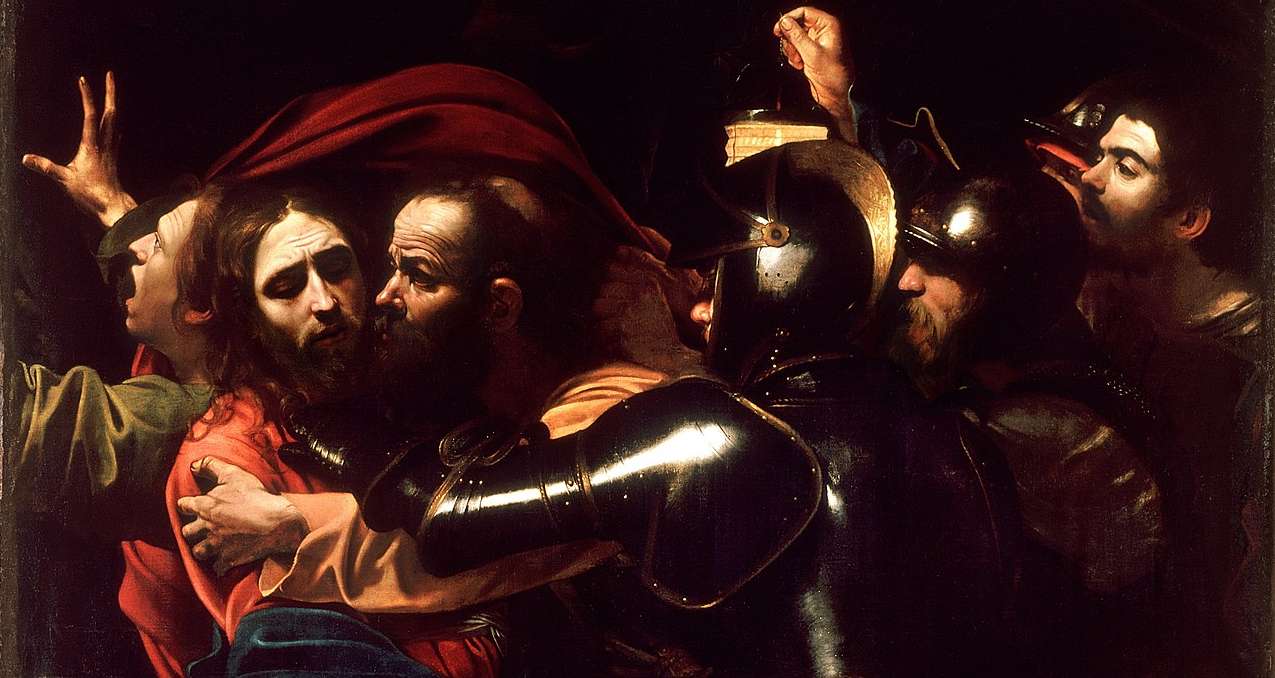The Kiss of Death
Judas, one of the Twelve, arrived. With him was a large crowd armed with swords and clubs, sent from the chief priests and the elders of the people. Now the betrayer had arranged a signal with them: “The one I kiss is the man; arrest him.” Going at once to Jesus, Judas said, “Greetings, Rabbi!” and kissed him. Jesus replied, “Do what you came for, friend.” Then the men stepped forward, seized Jesus and arrested him. (Matthew 26:47-50)
Most of Jesus’ ministry took place around Galilee, a relatively unimportant part of Judea (politically speaking). But Jesus would inevitably come to Jerusalem, that great city. Within a week, he would be killed. The question of who was responsible has been debated through the centuries.
Judas, one of Jesus’ followers, betrayed him to the authorities, kissing him on the cheek to identify him.
The Jewish leaders with whom he conspired had already been plotting for a while to get Jesus killed, finally bringing him before Pontius Pilate to be tried.
The Romans carried out the execution, albeit half-heartedly (or at least, as half-heartedly as anyone can carry out an execution as brutal and elaborate as a crucifixion), Pilate literally washing his hands of the affair.
The debates miss the point, however. Jesus foretold his death multiple times. At the Last Supper before he was betrayed, he pointed Judas out as the one who would betray him. When threatened with stoning earlier in his ministry, he walked through the crowd unharmed. Jesus could have walked away, literally and metaphorically, at any time. But he didn’t. As he said of himself, “the Son of Man did not come to be served, but to serve, and to give his life as a ransom for many.” (Mark 10:45)
Instead, like a scapegoat, Jesus walked the journey to Golgotha, outside the walls of Jerusalem, where he was stripped naked, given an ironic crown of thorns, nailed to a cross, and raised for all to gawk at and mock. He died, humiliated, cursed, and abandoned. As he died, he cried out, “My God, My God, why have you forsaken me?” The sky went dark, the earth trembled.
And yet. Those familiar with the Psalms of David might recognise Jesus cry as the beginning of what is now the 22nd Psalm, which goes on to say:
All the ends of the earth will remember and turn to the Lord, and all the families of the nations will bow down before him, for dominion belongs to the Lord and he rules over the nations.
As Jesus died, the curtain to the temple was torn in two, from top to bottom. The Most Holy Place was no longer separated from man. In his humiliation, Christ had been truly exalted.
Day later, he would return, resurrected, to his disciples, meeting them on the Emmaus Road. And “beginning with Moses and all the Prophets, he explained to them what was said in all the Scriptures concerning himself.” (Luke 24:27)
Then, with one final message, he would be raised again:
“You will receive power when the Holy Spirit comes on you; and you will be my witnesses in Jerusalem, and in all Judea and Samaria, and to the ends of the earth.” After he said this, he was taken up before their very eyes, and a cloud hid him from their sight. (Acts 1:8,9)
